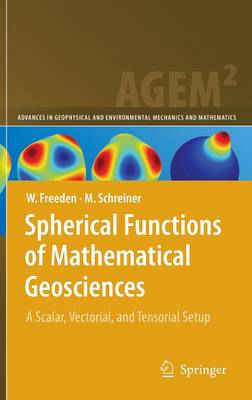Advances in Geophysical and Environmental Mechanics and Mathematics
1 total work
Spherical Functions of Mathematical Geosciences
by Willi Freeden and Michael Schreiner
Published 2 December 2008
Duringthelastdecades,geosciencesand-engineeringwerein?uencedbytwo essentialscenarios. First, thetechnologicalprogresshaschangedcompletely the observational and measurement techniques. Modern high speed c- puters and satellite-based techniques are entering more and more all (geo) disciplines. Second, there is a growing public concern about the future of our planet, its climate, its environment, and about an expected shortage of natural resources. Obviously, both aspects, viz. (i) e?cient strategies of protection against threats of a changing Earth and (ii) the exceptional s- uation of getting terrestrial, airborne as well as spaceborne, data of better and better quality explain the strong need for new mathematical structures, tools, and methods. In consequence, mathematics concerned with geosci- ti?c problems, i.e., geomathematics, is becoming more and more important. Nowadays, geomathematics may be regarded as the key technology to build the bridge between real Earth processes and their scienti?c understanding. In fact, it is the intrinsic and indispensable means to handle geoscient- cally relevant data sets of high quality within high accuracy and to improve signi?cantly modeling capabilities in Earth system research.
